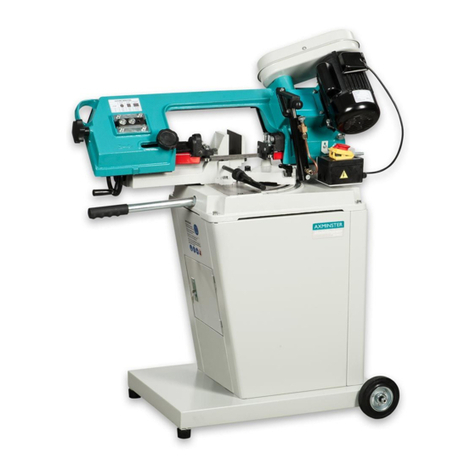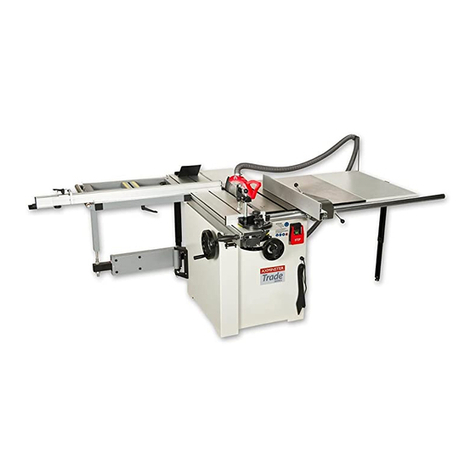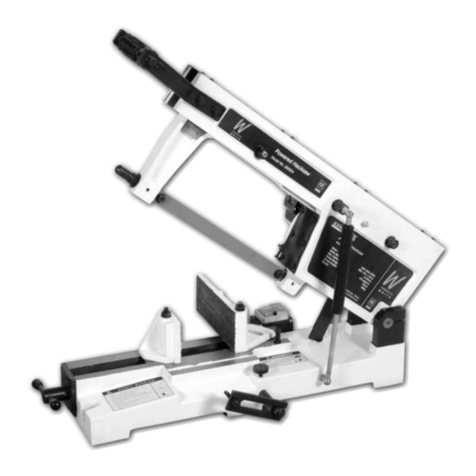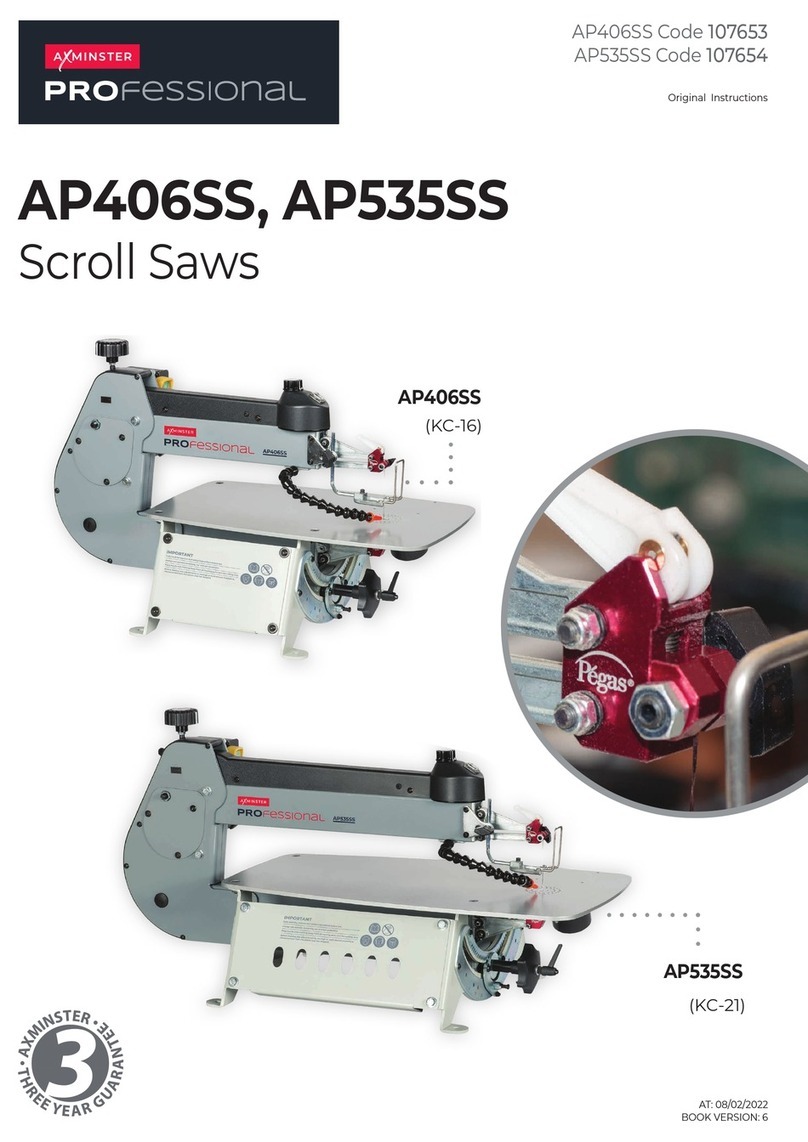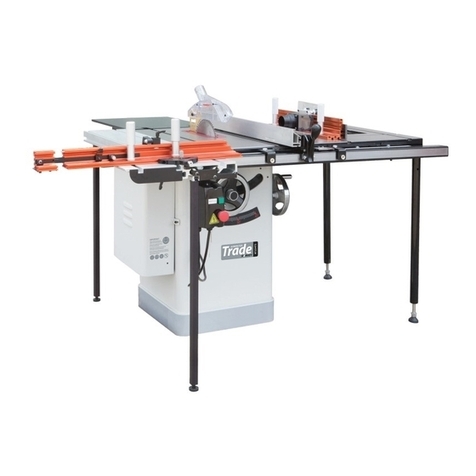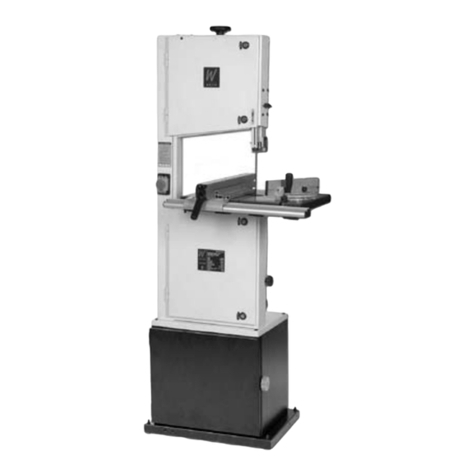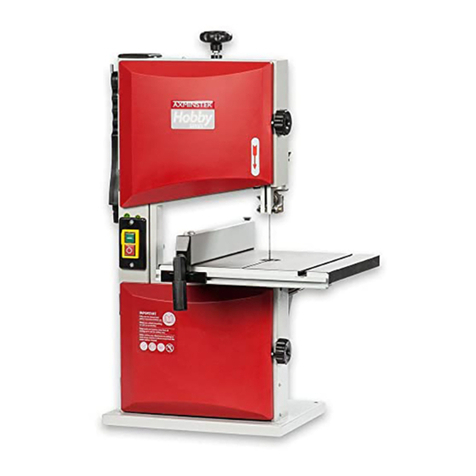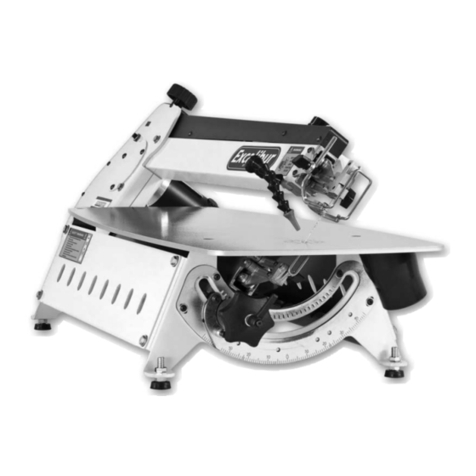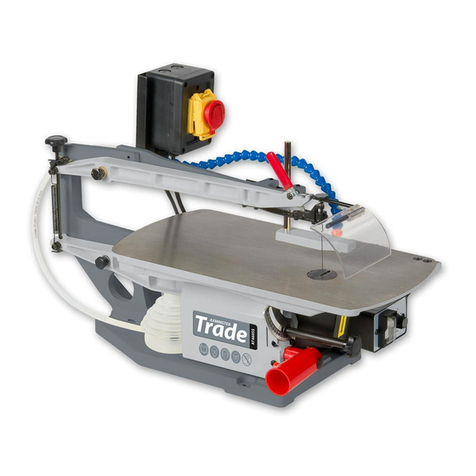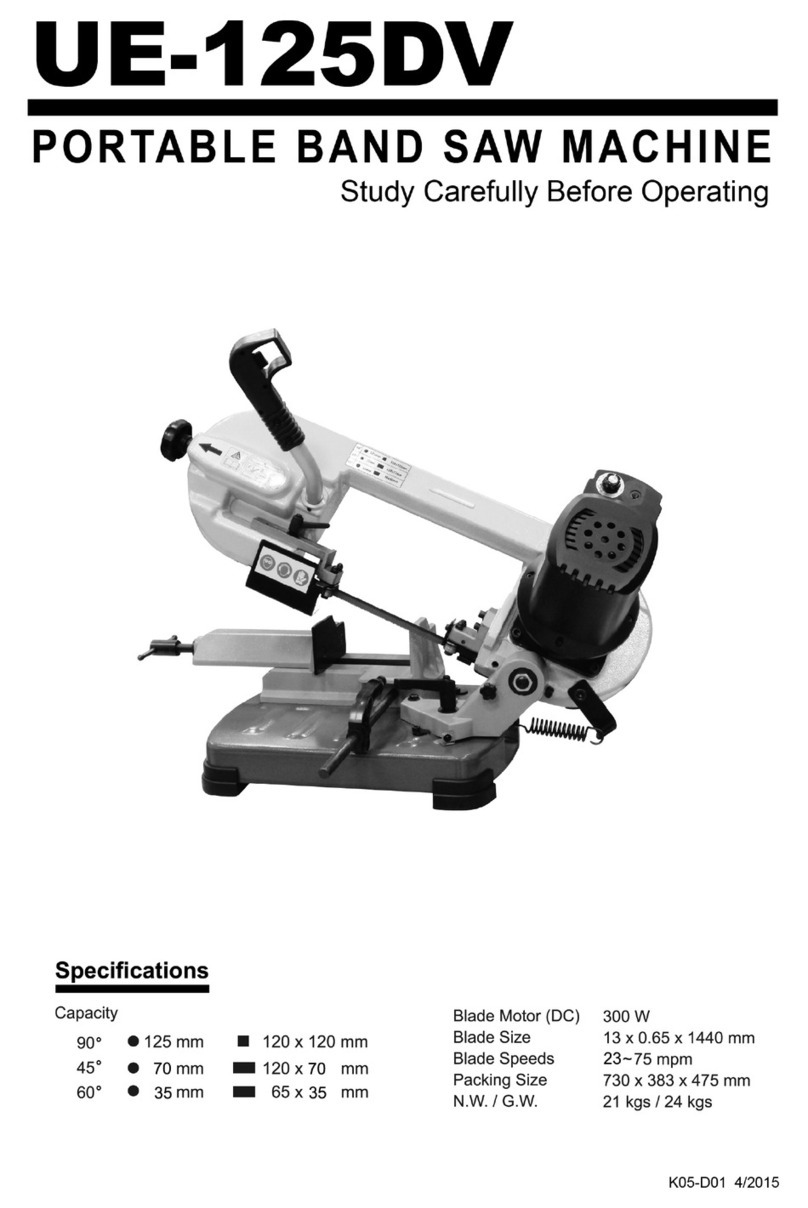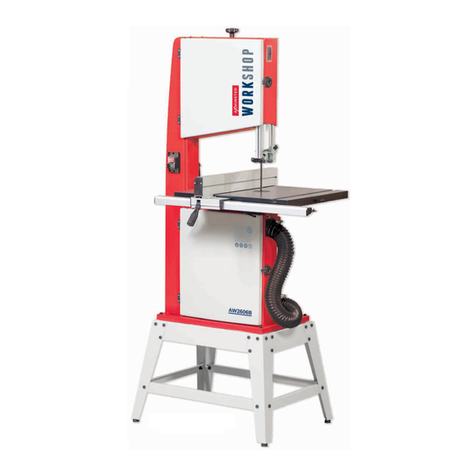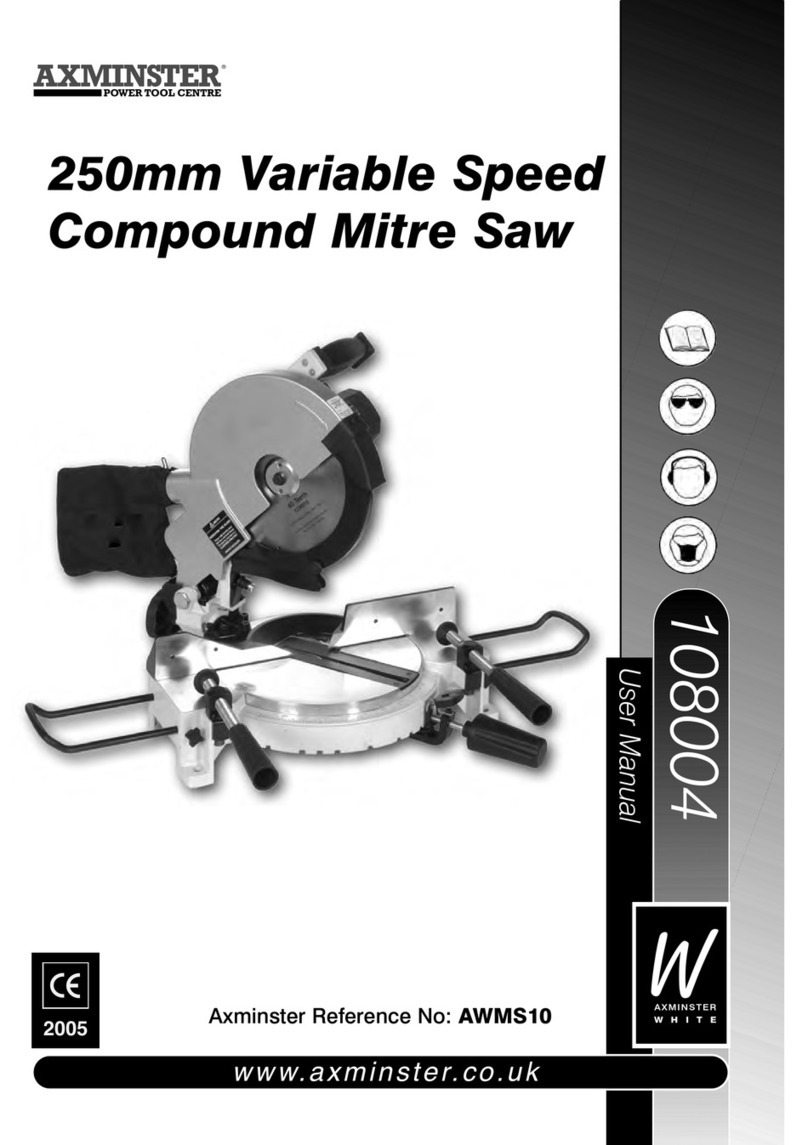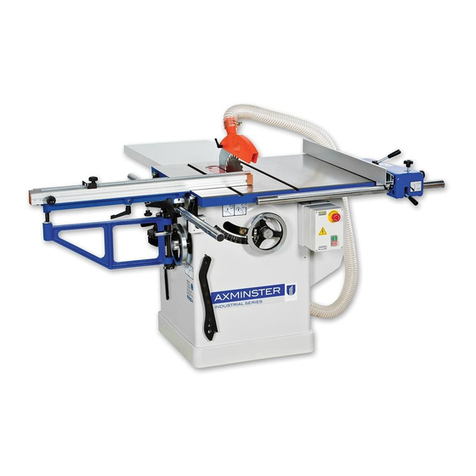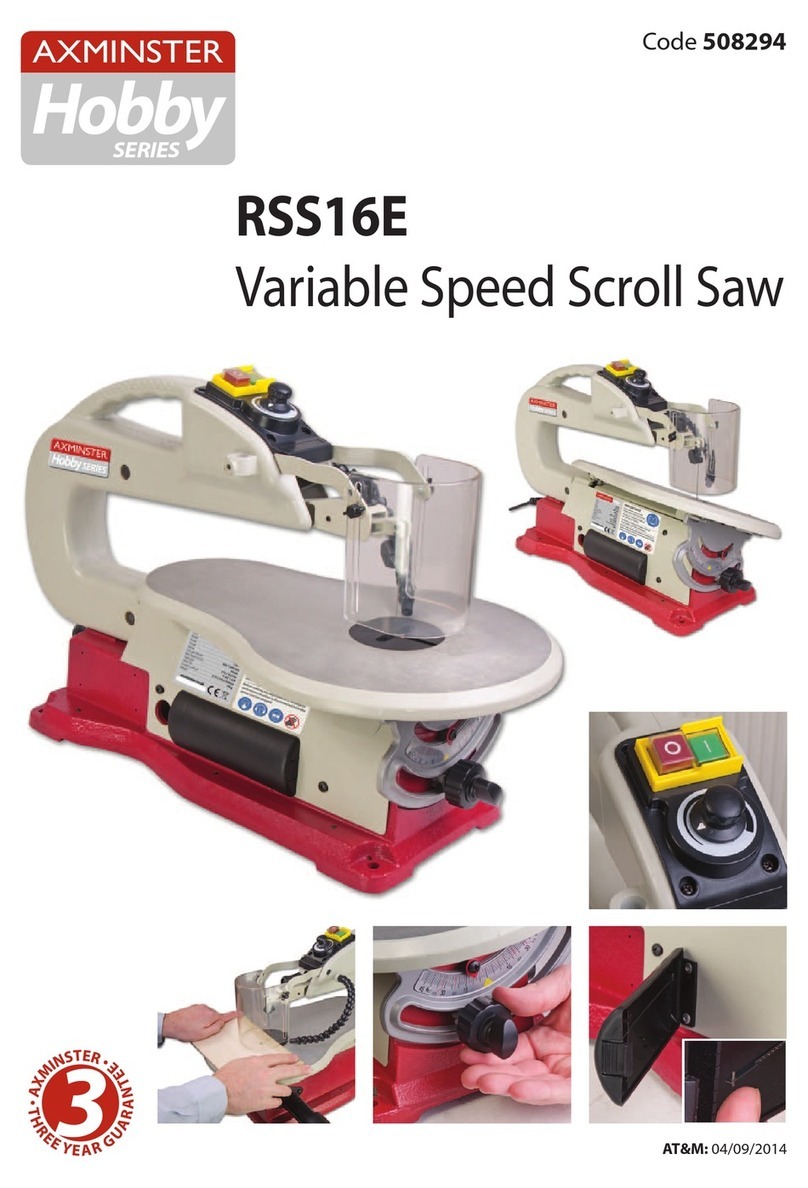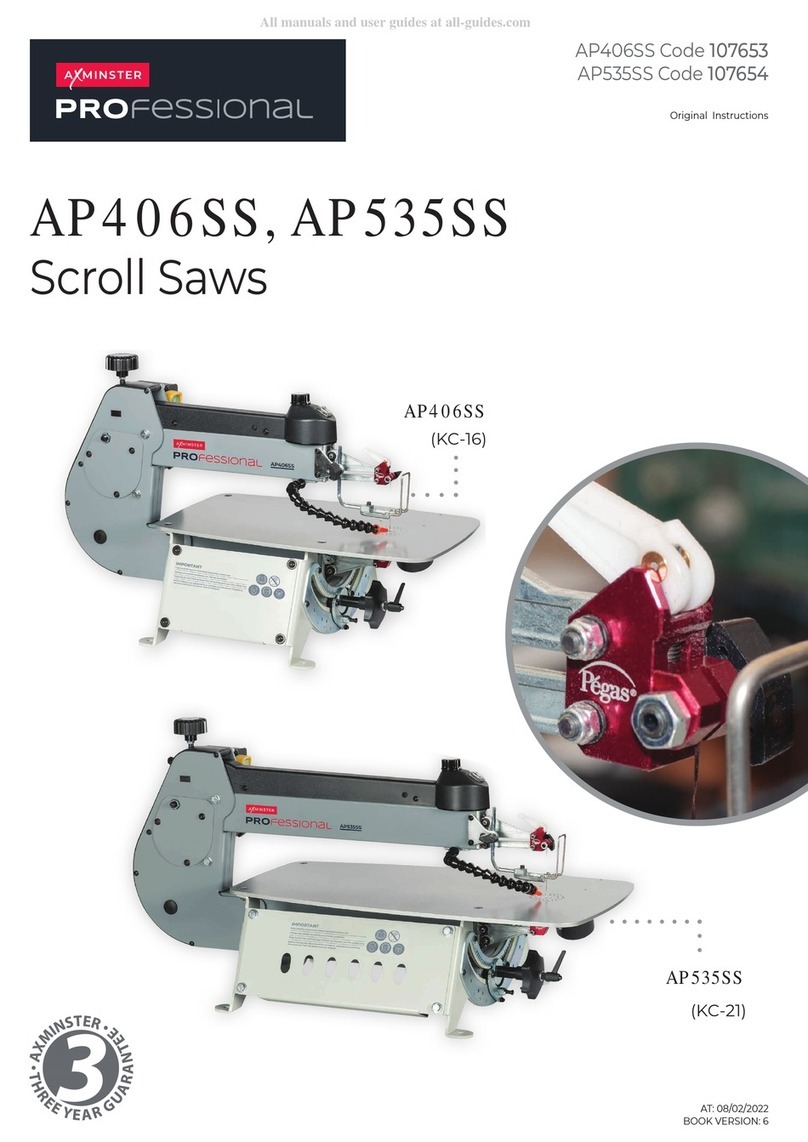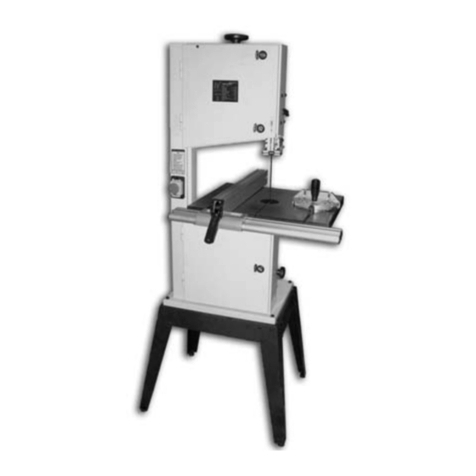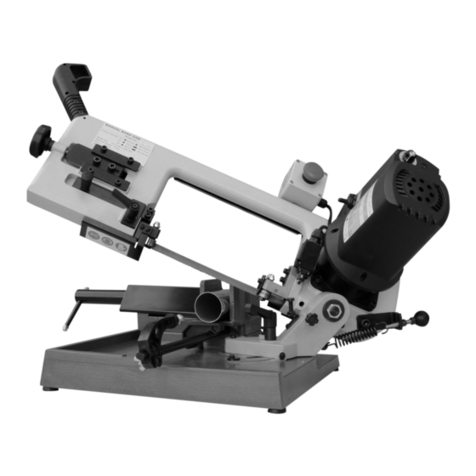
GENERAL INSTRUCTIONS FOR 230V MACHINES
5
The following will enable you to observe good
working practices, keep yourself and fellow workers
safe and maintain your tools and equipment in good
working order.
Mains Powered Tools
•Tools are supplied with an attached 13 Amp plug.
•Inspect the cable and plug to ensuree that neither
are damaged.Repair if necessary by a suitably
qualified person.
•Do not use when or where it is liable to get wet.
Workplace
•Do not use 230V a.c. powered tools anywhere
within a site area that is flooded.
•Keep machine clean.
•Leave machine unplugged until work is about to
commence.
•Always disconnect by pulling on the plug body
and not the cable.
•Carry out a final check e.g. check the cutting tool.
is securely tightened in the machine and the
correct speed and function set.
•Ensure you are comfortable before you start work,
balanced,not reaching etc.
•Wear appropriate safety clothing, goggles, gloves,
masks etc.Wear ear defenders at all times.
•If you have long hair wear a hair net or helmet to
prevent it being caught up in the rotating parts of
the machine.
•Consideration should be given to the removal of
rings and wristwatches.
•Consideration should also be given to non-slip
footwear etc.
•If another person is to use the machine, ensure they
are suitably qualified to use it.
•Do not use the machine if you are tired or distracted
•Do not use this machine within the designated
safety areas of flammable liquid stores or in areas
where there may be volatile gases.
•Check cutters are correct type and size,are
undamaged and are kept clean and sharp, this will
maintain their operating performance and lessen
the loading on the machine.
•
OBSERVE….
make sure you know what is
happening around you and
USE YOUR COMMON
SENSE.
WARNING!! KEEP TOOLS AND
EQUIPMENT OUT OF REACH OF
YOUNG CHILDREN
KEEP WORK AREA AS
UNCLUTTERED AS IS
PRACTICAL. UNDER NO
CIRCUMSTANCES SHOULD
CHILDREN BE ALLOWED IN
THE WORK AREA.
